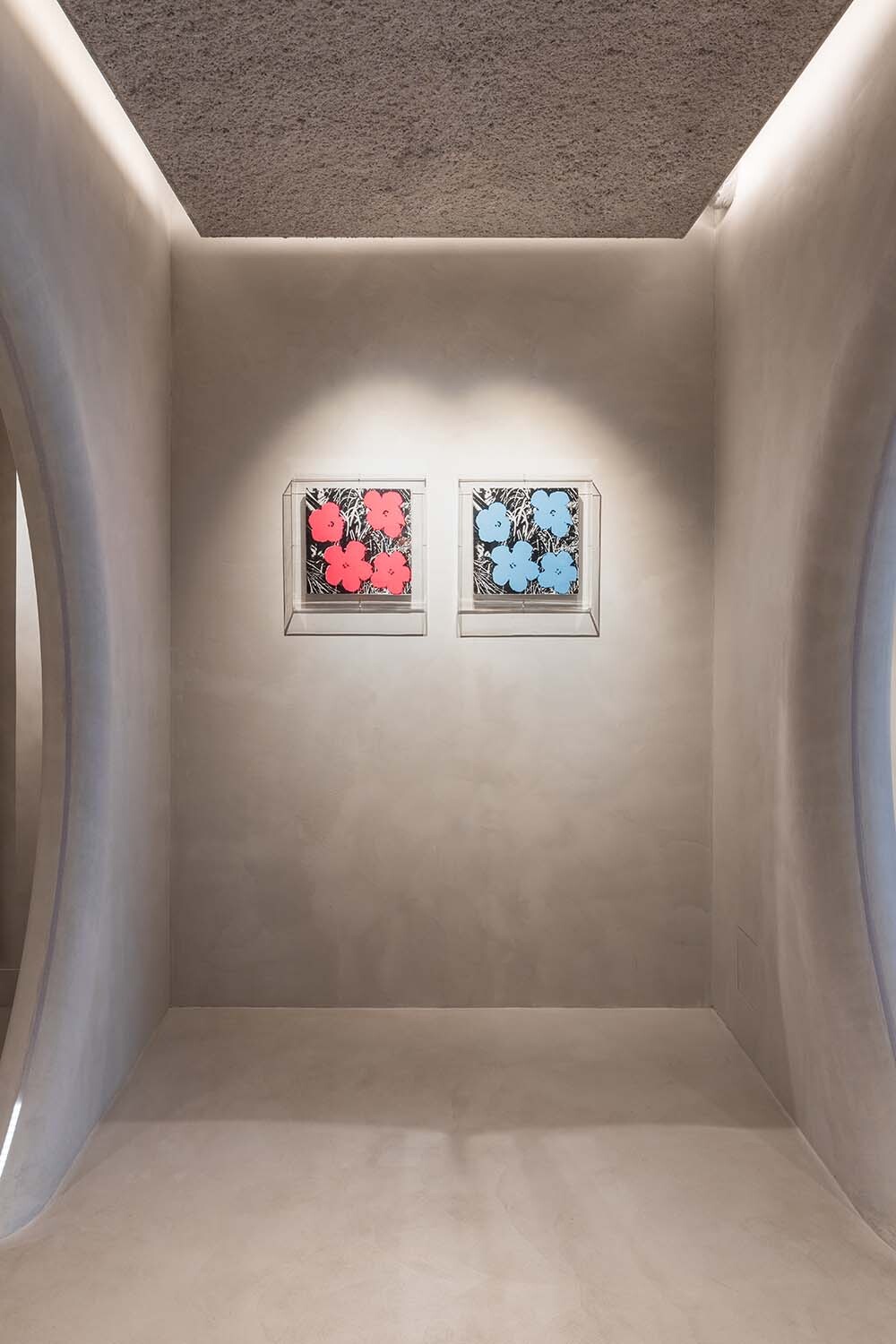Andy Warhol
FLOWERS ( 2 PARTS), 1964
- Andy Warhol (°1928, USA)
- acrylic and silkscreen ink on canvas
- 36 x 36cm each
‘I always notice flowers’ – Andy Warhol
The lead up to his inaugural show at Leo Castelli gallery in 1964 triggered an important shift in Andy Warhol’s artistic practice. Inspired by a photograph in the June 1964 issue of Modern Photography of seven hibiscus blossoms captured by the magazine’s executive editor, Patricia Caulfield, cropped, rotated and adapted for screen printing, Warhol began what would become one of his most iconic bodies of work. Rendered in vibrant, luscious pink and cool, electric blue, the flowers in the present works are sublime examples of his Flowers from 1964, superimposed against a stark, sombre black and white ground. In a notable iconographic deviation from his Death and Disaster series that debuted at Galerie Ileana Sonnabend earlier that same year, the Flowers represent a more mainstream, abstracted aesthetic that represent the epitome of his Pop aesthetic in their artificial, synthetic flatness and ordered compositional arrangement. Pared back to only their bold, essential elements, they recall the imagery prevalent in cartoons and advertising that was so influential in Warhol’s artistic vocabulary.
Born in Pittsburgh in 1928, Warhol began his career as an advertisement and commercial illustrator, a foundation that later would go on to inform his controversial and successful practice as an artist. Embracing consumerist American culture, and drawing upon popular, commercial aesthetics, he revolutionised the use of screen-printing in his practice, and his use of mechanical methods of reproduction, notably the commercial technique of silk screening, wholly revolutionized art-making. A central figure in the New York art scene until his untimely death in 1987, Warhol was notably also a mentor to such artists as Keith Haring and Jean-Michel Basquiat. Today, his works are held in the collections of the Art Institute of Chicago, Museum of Modern Art in New York, and the Tate Gallery in London.
